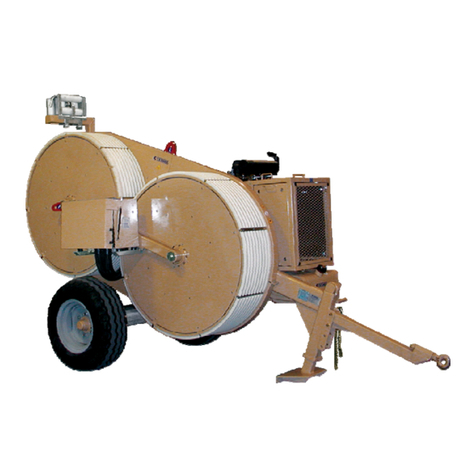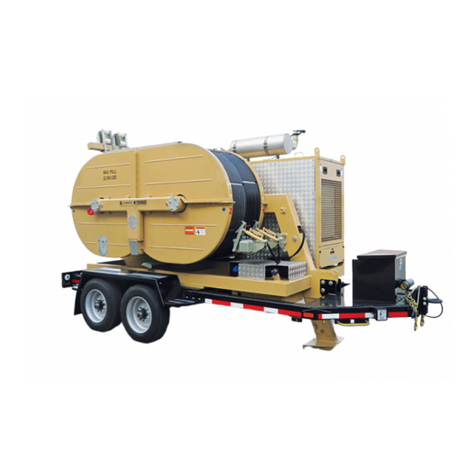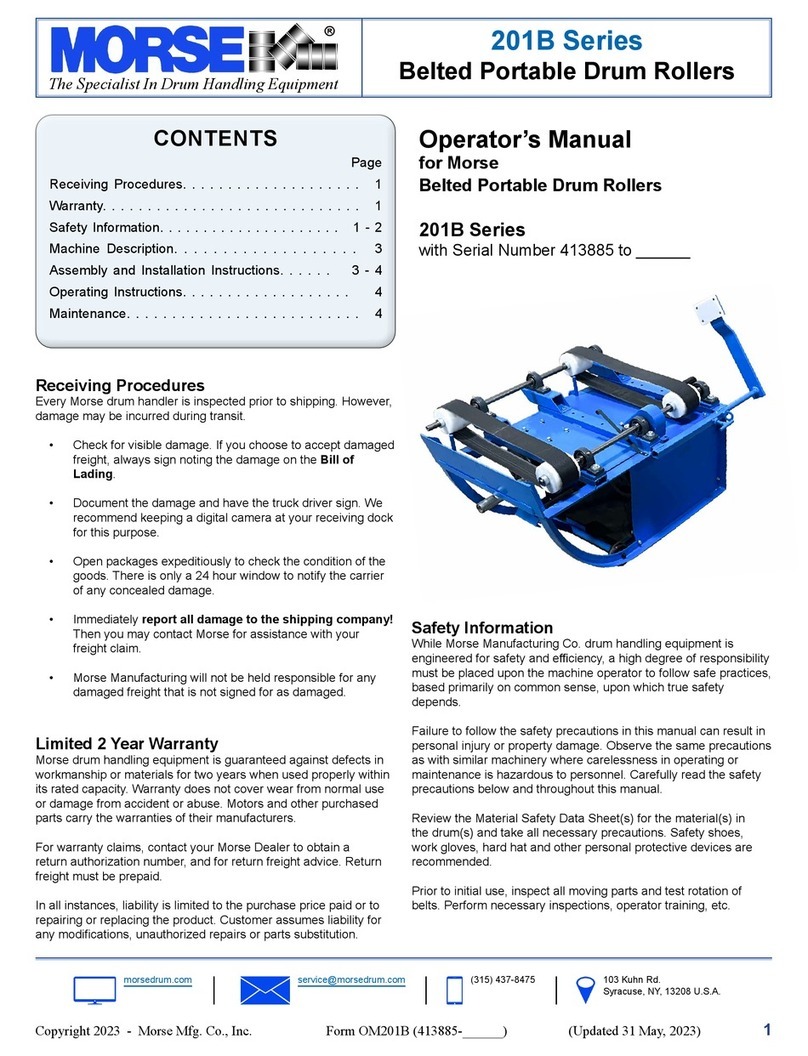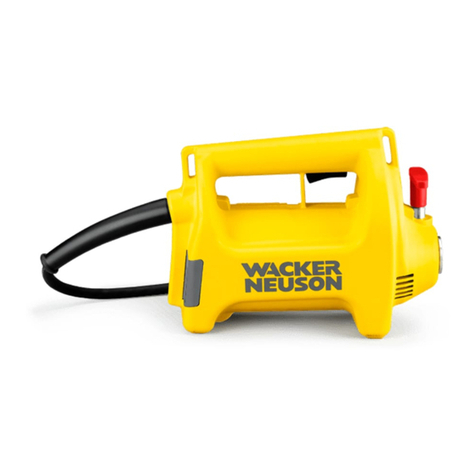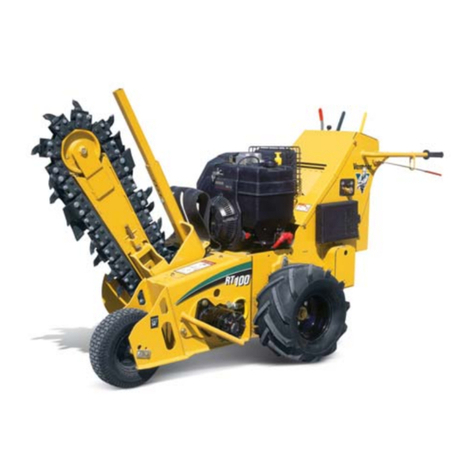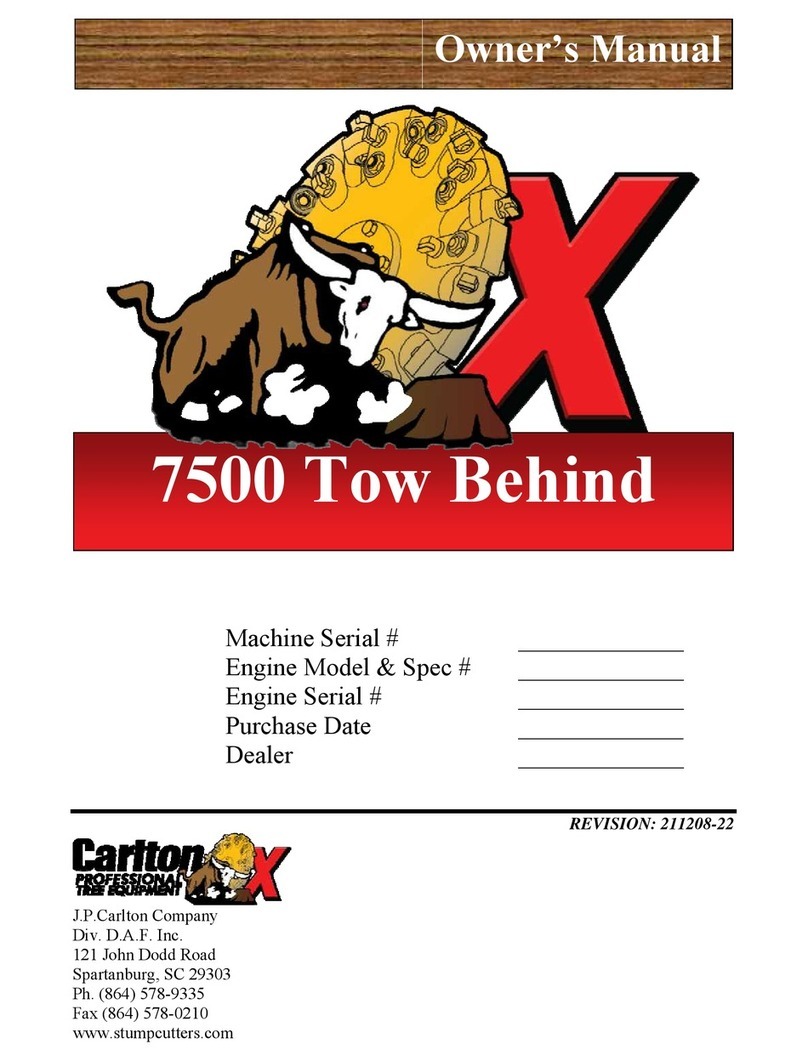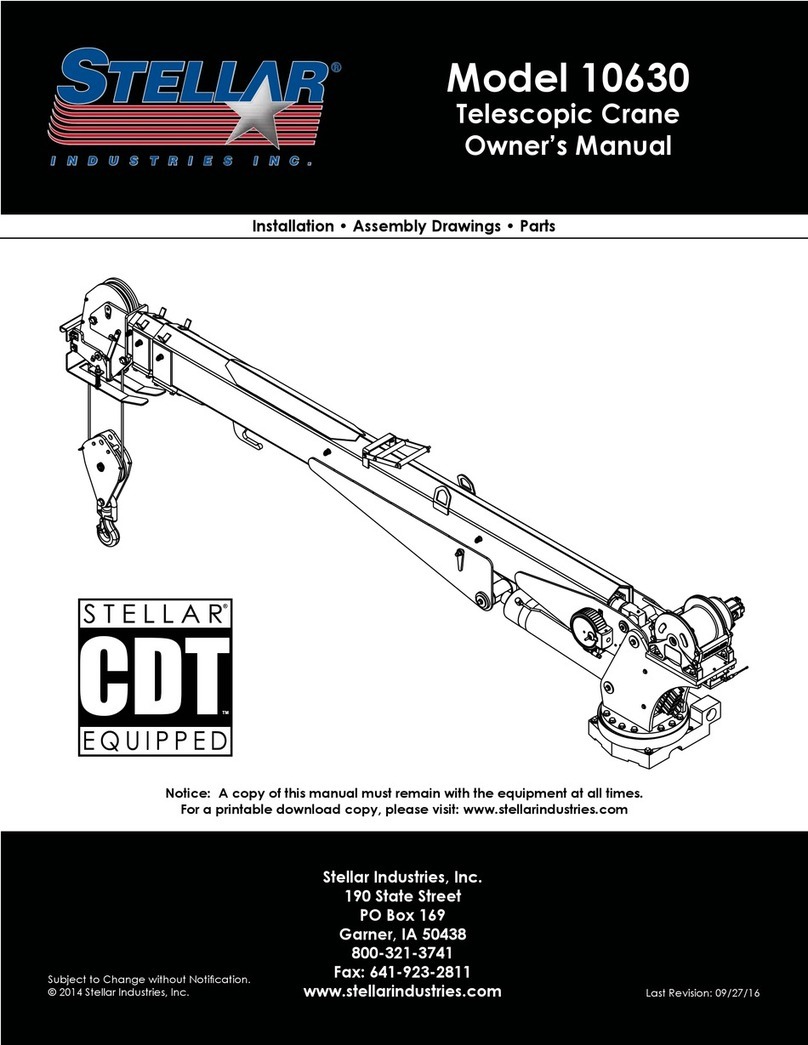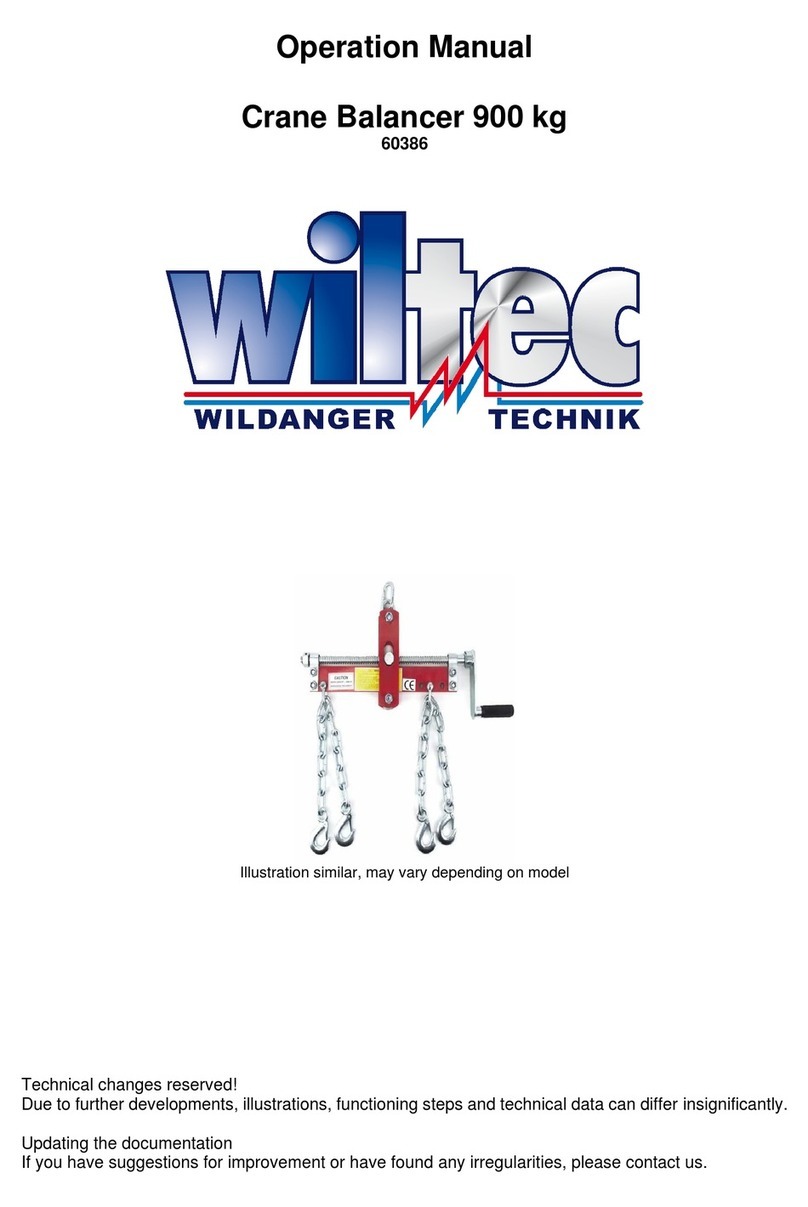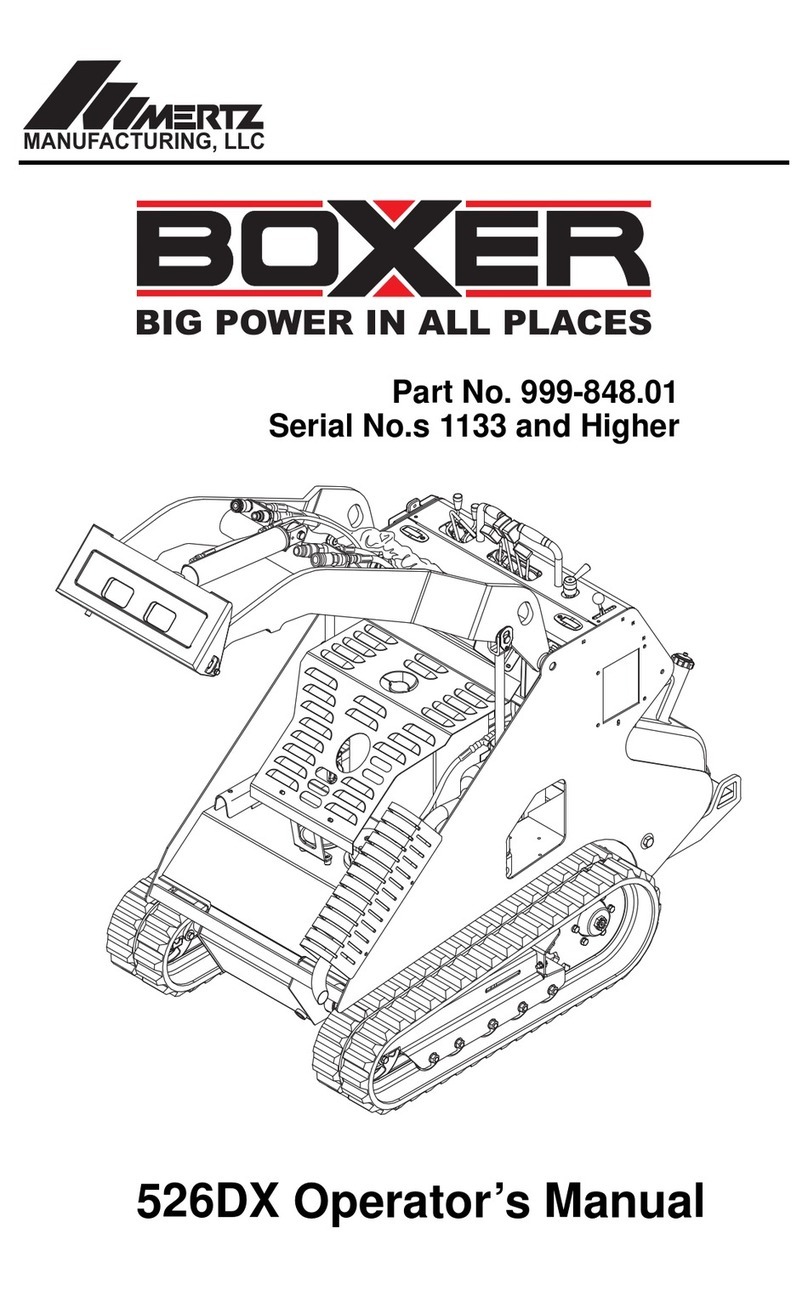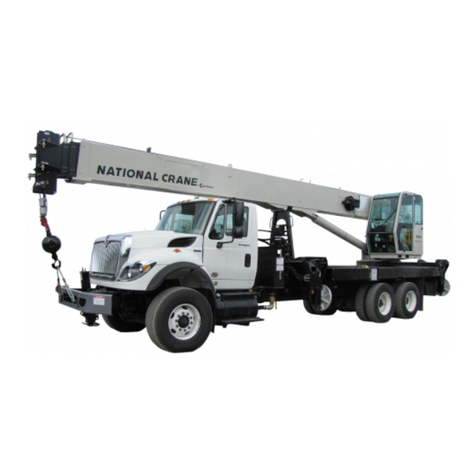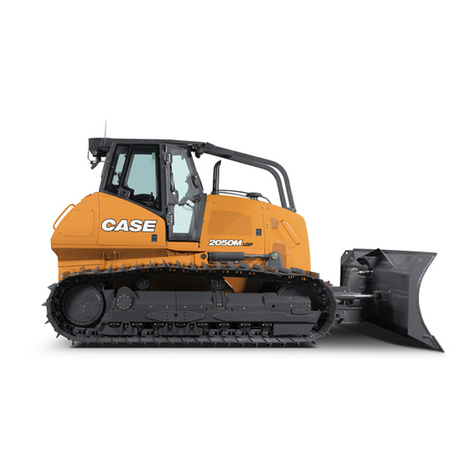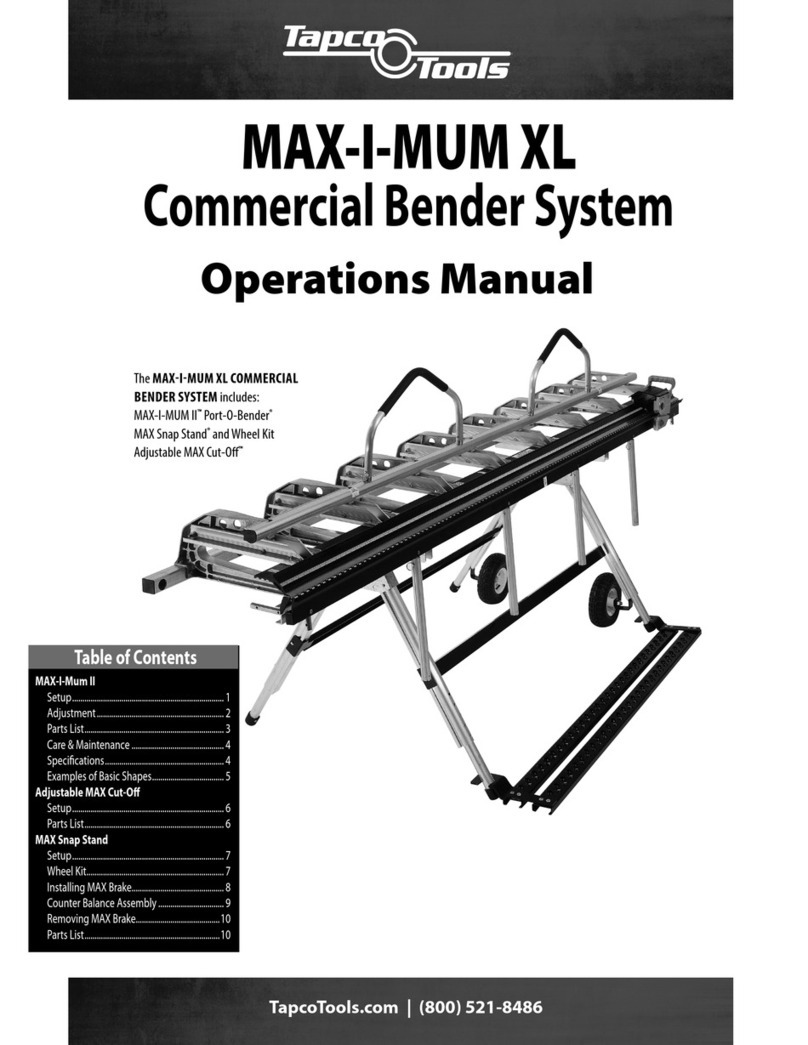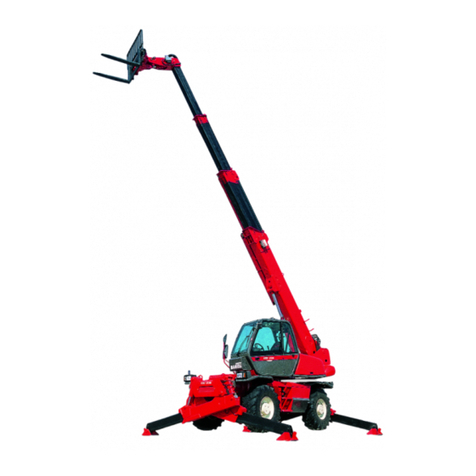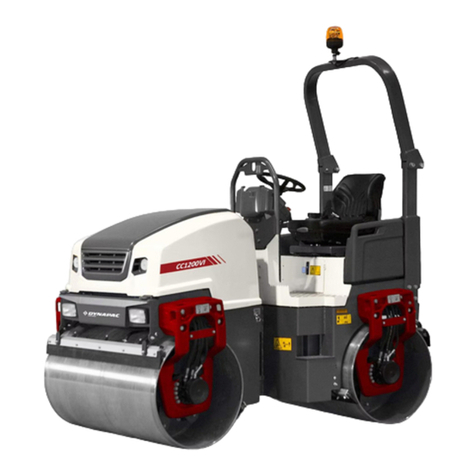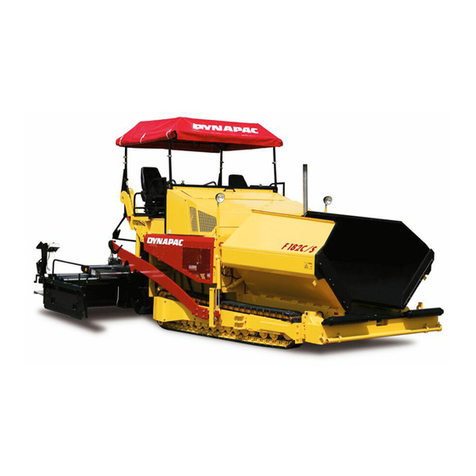Tesmec FRB616 Owner's manual

I
I
n
n
s
s
t
t
a
a
l
l
l
l
a
a
t
t
i
i
o
o
n
n
,
,
o
o
p
p
H
H
a
a
T
Te
en
ns
si
io
on
ne
e
r
r
p
p
e
e
r
r
a
a
t
t
i
i
o
o
n
n
a
a
n
n
d
d
m
m
a
a
i
i
n
n
t
t
a
a
n
nd
db
bo
oo
ok
k
r
r
M
Mo
od
de
el
l:
:
F
FF
F
F
FF
F
R
RR
R
R
RR
R
B
BB
B
B
BB
B
6
66
6
6
66
6
1
11
1
1
11
1
6
66
6
6
66
6
t
t
e
e
n
n
a
a
n
n
c
c
e
e
6
66
6
6
66
6

ATTENZIONE
Per motivi di sicurezza durante il trasporto la macchina è fornita senza olio idraulico e senza
carburante. Nel presente fascicolo troverete informazioni sulle caratteristiche e le quantità
richieste. In caso di dubbio consultare la TESMEC.
WARNING
The machine is supplied without hydraulic oil and fuel during transport for precautionary
measures. Please refer to this manual for all information regarding the characteristics and
quantities required. Should you have any doubt, please get in touch with TESMEC.
ATTENTION
Pour mesures de sécurité, pendant le transport la machine est livrée sans huile hydraulique
et sans carburant.
Référez-vous à ce manuel pour renseignements nécessaires sur les caractéristiques et
quantités. En cas de doute veuillez contacter TESMEC.
ATENCIÓN
Por motivos de seguridad la máquina se transporta sin aceite hidráulico y sin combustible.
En el presente fascículo encontrarán informaciones acerca de las características y de las
cantidades requeridas. En caso de dudas, consultar a TESMEC.
ATENÇÃO
Por razões de segurança durante o transporte, a máquina é fornecida sem óleo hidráulico e
combustível. No presente folheto poderão encontrar as informações sobre as características
a as quantidades requeridas.
Caso tenham alguma dúvida, rogamos-lhes pôr-se em contacto com a TESMEC.
ACHTUNG
Aus Sicherheitsgründen während des Transportes, wird die Maschine ohne Öl und Kraftstoff
geliefert. Im vorliegenden Gebrauchsanweisungsheft werden Sie Informationen über die
Eigenschaften und Mengen des Öls finden.
Wenn Sie im Zweifel sind, fragen Sie TESMEC um Rat.
ПРЕДУПРЕЖДЕНИЕ
Из соображений безопасности, при поставке машина транспортируется без рабочей
жидкости вгидравлической системе итоплива.
Пожалуйста, пол зуйтес настоящим руководством для получения любых сведений,
касающихся характеристик изаправочных емкостей.
Вслучае каких-либо сомнений, пожалуйста, свяжитес скомпанией ТЕСМЕК.
- 24050 Grassobbio (Bg) via Zanica, 17/O - 24060 Endine Gaiano (Bg) via Pertegalli, 2
Tel. 0039 / 035 / 4232911 Tel. 0039 / 035 / 825024
Telefax 0039 / 035 / 4522445 Telefax 0039 / 035 / 826375
E-mail: info@tesmec.it E-mail: info@tesmec.it

TENSIONER
Model: FRB616
TENSIONER
Model: FRB616
Serial number
.....................
Manufacturing year
.....................
Working order
.....................
USE AND MAINTENANCE INSTRUCTIONS

TENSIONER
Model: FRB616
Manual: MI-FRB616-020-01-GB
Date: 11.03.2015
Author: M. Colleoni
Page: 1 of 33
1. GENERAL INDEX
Page
1. GENERAL INDEX 1
2. GENERAL DATA AND PRESCRIPTIONS 3
2.1 MANUFACTURER 3
2.2 COMMUNICATIONS WITH THE MANUFACTURER 3
2.3 TYPOLOGY AND USING FIELD 3
2.4 PERFORMANCES 3
2.5 TECHNICAL CHARACTERISTICS 4
2.6 ACOUSTIC EMISSION 4
2.7 GENERAL INFORMATION FOR THE MACHINE USE 4
2.8 GENERAL PRESCRIPTIONS FOR THE OPERATOR CHARGED OF THE MACHINE USE 4
2.9 GENERAL PRESCRIPTIONS FOR THE OPERATOR CHARGED OF THE MACHINE
MAINTENANCE 5
2.10 KNOWLEDGE AND CARE OF THE INSTRUCTION MANUAL 5
2.11 CONDITION OF USE 5
2.12 TEMPERATURE LIMITS FOR HYDRAULIC OIL 6
2.13 USE NOT ALLOWED 6
2.14 RESPONSIBILITY 6
2.15 APPLIED NORMS 7
3. TRANSPORT AND POSITIONING INSTRUCTIONS 8
3.1 MACHINE LIFTING 8
3.2 TRANSPORT TYPOLOGIES AND PACKAGE 8
3.3 UNPACKING 8
3.4 ASSEMBLING OPERATIONS 9
3.5 TRANSPORT ON TRAILER 9
3.6 POSITIONING AND ANCHORING 9
4. INSTRUCTION FOR USE 11
4.1 PRESCRIPTIONS FOR THE OPERATOR 11
4.2 CONTROLS 11
4.3 PRELIMINARY OPERATIONS 11
4.4 MACHINE SET-UP 12
4.5 ELECTRONIC MULTI-FUNCTIONS DISPLAY PAGES 13
4.6 MACHINE START-UP 14
4.7 MACHINE USE FOR THE INDEPENDENT BRAKING OF RIGHT AND LEFT BULL-WHEELS 15
4.8 MACHINE USE FOR THE SIMULTANEOUS BRAKING OF RIGHT AND LEFT BULL-WHEELS 15
4.9 MACHINE STOP 15
4.10 MACHINE USE WITH ONE CIRCUIT FOR BRAKING (TENSIONER) AND THE OTHER FOR
RECOVERY (PULLER) 16
4.11 MACHINE USE AS PULLER (RECOVERY FUNCTION) FOR THE CONDUCTORS ON
CAPSTANS 16
4.12 MACHINE USE AS PULLER (RECOVERY FUNCTION) FOR THE CONDUCTORS
SAGGING REGULATION 16
4.13 REEL ELEVATORS USE 17
4.14 ROPE LOCKING CLAMP (OPTIONAL) 18
4.15 COMPRESSOR CONNECTION (OPTIONAL) 18
5. INSTRUCTION FOR USE –CONNECTED MACHINES 19
5.1 GENERAL ASPECTS 19
5.2 MACHINES SET-UP 20
5.3 CONNECTED MACHINES FUNCTION (OPT. 057) 21
5.4 MACHINE USE FOR THE INDEPENDENT BRAKING OF RIGHT AND LEFT BULL-WHEELS 21
5.5 MACHINE USE FOR THE SIMULTANEOUS BRAKING OF RIGHT AND LEFT BULL-WHEELS 22
5.6 MACHINE USE FOR SIMULTANEOUS BRAKING OF SIX BUNDLED CONDUCTORS 22
5.7 MACHINE STOP 22
5.8 MACHINE USE AS PULLER (RECOVERY FUNCTION) FOR THE CONDUCTORS SAGGING
REGULATION 23

TENSIONER
Model: FRB616
Manual: MI-FRB616-020-01-GB
Date: 11.03.2015
Author: M. Colleoni
Page: 2 of 33
5.9 ROPE LOCKING CLAMP (OPTIONAL) 23
5.10 CONNECTED MACHINES USE WITH SYNCHRONIZER FOR A SIMULTANEOUS
BRAKING OF ALL INDEPENDENT CIRCUITS 23
5.11 CONNECTED MACHINES USE CON SINCRONIZADOR Y ENCHUFE MECÁNICO PARA
FOR A SIMULTANEOUS BRAKING OF ALL INDEPENDENTS CIRCUITS 2 BY 2 25
5.12 ALARM CONDITION WHEN USING CONNECTED MACHINES 25
5.12.1 STRINGING LENGTH ERROR 25
5.12.2 SWITCH ON THE MACHINE WITH CONTROL NOT IN NEUTRAL 25
5.12.3 EMERGENCY STOP 25
5.12.4 CAN-BUS DIS-CONNECTION BETWEEN THE MACHINES 25
6. SAFETY CONDITIONS 26
6.1 SAFETY DEVICES 26
6.2 EMERGENCY STOP DEVICE 26
6.3 PERIODIC OPERATIONS 26
6.4 RESIDUAL RISKS 27
7. MAINTENANCE 28
7.1 GENERAL PRESCRIPTIONS 28
7.2 LEVELS CONTROL 28
7.3 TYRES INFLATION PRESSURE 28
7.4 SUGGESTED LUBRICANTS 28
7.5 HYDRAULIC CIRCUIT MAINTENANCE 29
7.6 RADIATOR’S MAINTENANCE 30
7.7 GREASING 30
7.8 OTHER PERIODIC OPERATIONS 30
7.9 SUMMARY TABLE FOR ORDINARY MAINTENANCE 31
8. HOW TO DISABLE THE MACHINE 32
8.1 TRANSPORT 32
8.2 EXTENDED SERVICE STOP 32
8.3 STRIPPING 32
9. ENCLOSED DOCUMENTS 33
9.1 TABLES 33
9.2 DRAWINGS 33
9.3 OTHER DOCUMENTS 33

TENSIONER
Model: FRB616
Manual: MI-FRB616-020-01-GB
Date: 11.03.2015
Author: M. Colleoni
Page: 3 of 33
2. GENERAL DATA AND PRESCRIPTIONS
2.1 MANUFACTURER
TESMEC S.p.A.
Via Zanica, 17/O
24050 - GRASSOBBIO
BG - ITALY
tel. (+39)-035-4232911
fax (+39)-035-4522445
e-mail: service-stringing@tesmec.it
parts-stringing@tesmec.it
Via Pertegalli, 2
24060 - ENDINE GAIANO
BG - ITALY
tel. (+39)-035-825024
fax (+39)-035-826375
e-mail: service-stringing@tesmec.it
parts-stringing@tesmec.it
2.2 COMMUNICATIONS WITH THE MANUFACTURER
For any information related to the machine (use, maintenance, spare parts) always state Model, Serial
Number, Manufacturing Year and Order. These data can be found in the machine-identifying table.
2.3 TYPOLOGY AND USING FIELD
The machine mod. FRB616 is suitable for the simultaneous drive of 2 conductors with a max. diam. of
46 mm with two couple of bull-wheels at independent control.
The conductors' braking is obtained by the pressure regulation in the hydraulic circuit.
This system guarantees, besides a remarkable sensibility, a nearly constant braking by varying the
stringing speed change.
The power transmission to the large groove bull-wheels for the functioning as puller is transmitted
through a close hydraulic circuit with a variable delivery pump and fixed displacement motor.
Two hydraulic vacuum brakes stop automatically the two large groove bull-wheels should the work be
interrupted and a damage in the hydraulic circuit occur.
The tensioner is equipped with connections for anchoring and lifting; the frame is equipped with a rigid
axle for towing on road at 30 km/hour and hand wheel brake and front lifting jack.
2.4 PERFORMANCES
Functioning as a tensioner
1 conductor 2 conductors
Max. tension 140 kN 2 x 70 kN
Max. speed 5 km/h 5 km/h
Functioning as a puller
Max. tensions 140 kN 2 x 70 kN
Max. speed 0.7 km/h 0.7 km/h
ATTENTION: the use with conductors with diameter lower than the max. admitted one,
causes the reduction of the max. applicable pull in comparison with the min. working
load granted by conductor.
Performances are referred to the machine without optional, at sea level and at 20°C.

TENSIONER
Model: FRB616
Manual: MI-FRB616-020-01-GB
Date: 11.03.2015
Author: M. Colleoni
Page: 4 of 33
2.5 TECHNICAL CHARACTERISTICS
Bull-wheels nominal diameter: 1700 mm
Max. conductor diameter: 46 mm
Diesel engine: 46 kW –2600 rpm
Electric system: 24 V
Transmission: 2 open hydraulic circuits with hydraulic oil cooling
Safety brake: 2 negative and self-acting type
Dynamometer: 2 hydraulic type
Meter-counters: 2 electronic type
Axle: rigid type with mechanical parking brake for towing at max.
speed of 30-km/h
Dimensions: length - 4295 mm
width - 2500 mm
height - 2920 mm
Mass: 7500 kg
2.6 ACOUSTIC EMISSION
Level of continuous sound pressure to the operator seat (UNI 9432) Lep = 85 dB(A)
2.7 GENERAL INFORMATION FOR THE MACHINE USE
a. Only employed and qualified operators must use the machine.
Qualified operators is intended to be the person who has received a qualified training from the
using Company or, as alternative, from the manufacturer.
b. Machine must be used only for the work it was designed for.
c. Machine cannot be used with non-authorised personnel on the working site.
d. For safety reasons, during transport machine comes without hydraulic oil and fuel.
Characteristics and required quantities are listed in the present manual.
e. For any doubt concerning use, functioning, maintenance or everything else, contact the After-sales
Service of the manufacturer.
2.8 GENERAL PRESCRIPTIONS FOR THE OPERATOR CHARGED OF THE MACHINE USE
a. Operator has to know safety directives for accident prevention in force in the machine using
country, for a correct use of the same.
b. The operator in charge with the installation and maintenance of the machine must use suitable
clothes to the working site and to the situation where he finds himself; in particular he must avoid
the use of very large clothes, chains, bracelets, rings or whatever can get entangled with moving
parts.
c. The operator has to use the necessary protecting devices (i.e. gloves, boots, helmet, etc.).
It is compulsory the use of personal protecting devices for hearing.
d. The operator must not carry out on his own initiative operations or interventions that are not up to
him.
e. The operator must carefully follow danger and/or prohibition prescriptions contained in the
instruction manual or indicated on the machine.
f. The working area of the operator has to be cleaned from possible oil or liquids wastes and free of
materials or equipment that may be considered as on obstacle for the operator work.
g. The operator must absolutely avoid the direct inhalation of the exhaust gas of the endothermic
engine.

TENSIONER
Model: FRB616
Manual: MI-FRB616-020-01-GB
Date: 11.03.2015
Author: M. Colleoni
Page: 5 of 33
2.9 GENERAL PRESCRIPTIONS FOR THE OPERATOR CHARGED OF THE MACHINE
MAINTENANCE
a. It is absolutely forbidden to carry out any work of maintenance, adjustment or setting on units
while stringing (except for the operations indicated in the present manual).
b. Before carrying out any maintenance operations, stop the energy feeding (except for the cases
indicated in the present manual) and wait till the cooling of the elements subjected to heating.
c. All the maintenance operations of the machine must be carried out with machine on a level surface
and not under load.
d. Authorised and trained personnel must do all the maintenance operations, ordinary and not
ordinary. Trained personnel are intended to be the person who has received a qualified training
from the using Company or, as alternative, from the manufacturer.
e. The operator in charge with the machine maintenance must use suitable clothes to the working site
and to the situation where he finds himself; in particular he must avoid the use of very large
clothes, chains, bracelets, rings or whatever can get entangled with moving parts.
f. The operator has to use the necessary protecting devices (i.e. gloves, boots, helmet, etc.).
g. All the maintenance operations, ordinary and not ordinary, must be effectuated respecting the
prescriptions included in the present manual or following technical indications written by the
manufacturer. The non-respect of the prescribed restrains relieves the manufacturer from any
responsibility causing also the loss of warranty.
2.10 KNOWLEDGE AND CARE OF THE INSTRUCTION MANUAL
a. The information contained in the instruction manual applies to all the operators charged with the
use and/or the maintenance of the machine.
b. The instruction manual is not a training manual.
c. Before using the machine the chief of the job site and the operator must read the instruction
manual.
d. The chief of the job site is obliged to inform all the operators about the instructions contained in
the manual.
e. The user must carefully follow the instructions listed in the present manual.
f. Before using the machine, the operator must be able to use it and has to exactly know the
positions and the operations of all the controls.
g. The chief of the job site must verify that the instructions contained in the manual are applied.
h. The instruction manual must be kept, in order to be consulted, for all the life of the machine and
also when it is given to another user.
i. The instruction manual must be kept in a sheltered and dry place.
ATTENTION: present manual belongs exclusively to the manufacturer.
The reproduction, event partial, of the text is forbidden.
2.11 CONDITION OF USE
a. Temperature: from -10°C to +45°C (in standard configuration).
b. Relevant moisture: from 30% to 90% 5%.
c. Weather conditions: any (in line with working conditions).
d. Natural and/or artificial lighting of the working site.

TENSIONER
Model: FRB616
Manual: MI-FRB616-020-01-GB
Date: 11.03.2015
Author: M. Colleoni
Page: 6 of 33
2.12 TEMPERATURE LIMITS FOR HYDRAULIC OIL
When using the machine, always remember to respect the following temperature limits that can be
reached with hydraulic oil as function of the working condition.
TEMPERATURE LIMITS FOR HYDRAULIC OIL (°C)
Working condition
Hydraulic oil viscosity
VG 22
VG 32
VG 46
VG 68
Minimum temperature running in neutral position
-21
-14
-7
-1
Minimum temperature running in full load
8
16
24
32
Maximum temperature running in full load
48
57
67
76
Maximum temperature running in neutral position
63
73
83
93
For additional information concerning the hydraulic oil, see chapter "Maintenance" and the attached
comparative table of the oils used on the machine.
2.13 USE NOT ALLOWED
The machine must not be used:
a. lifting persons and/or goods
b. in grounds on which the machine cannot be positioned and anchored in a proper way
c. in areas with brushwood or other materials presence that can be easily set on fire
d. in closed/unventilated sites or, however, not sufficiently airy (tunnel or similar)
e. in sites with presence of gas that can be easily set on fire or explosives
f. in sites with presence of explosive materials
g. on aircraft, crafts, floating platforms and similar
h. for structure demolition, shafts felling or similar
i. for pulling flexible elements that can be highly lengthening, which allow elastic power accumulation
j. with ropes or joints having a bigger diameter than the one specified in present manual
k. with inhibited and broken safety devices installed on the machine
l. when winding on the bull-wheels ropes and/or conductors having a smaller diameter as a
succession of ropes and/or conductors having a bigger diameter.
PROHIBITION: is not allowed to install on board radio equipments. These could create
electronic equipment malfunctions, putting the personnel at serious risk.
2.14 RESPONSIBILITY
The use of the machine for scopes different from those foreseen on paragraph 2.3 (Typology and
using field), even if not well described in this manual, has to be considered extremely dangerous and
then forbidden.
The non-respect of the prescribed restrains causes a situation of improper use for technical
and persons safety purposes and relieve the manufacturer from any responsibility, civil or
penal, in case of accidents to persons or damages to things, causing the loss of warranty.
The manufacturer responsibility declines even when one of the following situations happens:
a. for the consequences caused by tampering and/or modifications carried out without the
manufacturer’s written acceptance (in this case the operator becomes the manufacturer with
relevant obligations and responsibilities, both civil and penal)
b. for the use of not original spare parts
c. or bad maintenance
d. for the use with disconnected safety devices
e. for the connection to machine and/or plans not produced and not directly authorised by the
manufacturer in a written acceptance.

TENSIONER
Model: FRB616
Manual: MI-FRB616-020-01-GB
Date: 11.03.2015
Author: M. Colleoni
Page: 7 of 33
2.15 APPLIED NORMS
If the machine is commercialized in C.E. responds to the following regulatory framework:
2006/42/CE Norm of the European Parliament and Council referring to the laws of the machines
member States.
2004/108/CE Norm of the European Council referring to the laws of the electromagnetic
compatibility member States.
If the machine is commercialized outside the C.E. was made reference to the following regulatory
framework:
2006/42/CE Norm of the European Parliament and Council referring to the laws of the machines
member States.
2004/108/CE Norm of the European Council referring to the laws of the electromagnetic
compatibility member States.
.

TENSIONER
Model: FRB616
Manual: MI-FRB616-020-01-GB
Date: 11.03.2015
Author: M. Colleoni
Page: 8 of 33
3. TRANSPORT AND POSITIONING INSTRUCTIONS
3.1 MACHINE LIFTING
For the machine lifting use only devices as overhead travelling cranes or lift trucks, with a capacity
equal to the mass to be lifted.
The instruments used for the machine lifting (ropes, cables, hooks, etc.) have to be exactly
dimensioned as compared to the mass to be lifted and have to be connected to the proper elements
foreseen on the machine (table 1, pos. 2).
During machine lifting operations, the presence of persons on the machine is strictly forbidden.
DANGER: the non-respect of the above mentioned conditions may cause dangerous
situations as well as damages to the machine with the consequent decline of any warranty
condition.
3.2 TRANSPORT TYPOLOGIES AND PACKAGE
Transport by land by truck
The machine comes without all the liquids that can be set on fire and protected in the most exposed
and delicate parts by means of cardboard and/or plywood and/or polyethylene extensible film.
To fix the machine on the platform of the transporting unit, use nailed wedges and/or metal brackets
and/or tie rods.
Transport by sea in wooden cases or container
The machine comes without all the liquids that can be set on fire; metal parts are protected with
waterproof wax.
To fix the machine on the package, use nailed wedges and/or metal brackets and/or tie rods.
At the inside, the wooden case foreseen a protection with tarpaper.
Materials usually used for the package are:
wooden
nails and/or steel screws
cardboard and/or paper
polyethylene extensible film
adhesive tape.
3.3 UNPACKING
When receiving the machine verify the integrity of the package; advise immediately the manufacturer
and the person in charge of the transport (even with photos) when possible damages due to transport
or tampering with removal, even partial, of the content happen.
Verify if the supplied material corresponds to the ordered one; immediately advise the manufacturer if
there are some discrepancies.
In case of transportation on wooden case, take away, in sequence, the upper cover and lateral panels,
before removing the machine.
During unpacking operations, avoid any shock to the structure or to the machine units, in order to
avoid any damage to the machine itself.
ATTENTION: the elimination of packaging materials must be effectuated in conformity with the
norms in force in the relevant country.

TENSIONER
Model: FRB616
Manual: MI-FRB616-020-01-GB
Date: 11.03.2015
Author: M. Colleoni
Page: 9 of 33
3.4 ASSEMBLING OPERATIONS
Assemble the tyres in the suitable seats.
Assemble the entry rollers in the suitable seats (see tables 4 and 5).
3.5 TRANSPORT ON TRAILER
Machine is not suitable for road towing.
Possible displacements on trailer in the working site must be carried out by a connection to the towing
unit by means of the towing eye on the drawbar (table 1, pos. 12) and in the respect of the speed limits
of the axle. The used towing unit must be homologated for towing trailers with mass and dimensions
as per the described machine.
To connect the towing unit to the towing eye of the drawbar, lift the rear stabiliser (table 1, pos. 11), lift
the plough lifting jack (table 1, pos. 14) using the control on the panel (table 4, pos. 4).
Check the inflation pressure of tyres (7 bar).
During trailer machine transport operations is nobody must stay in the machine itself.
ATTENTION: dangerous situations during towing if the tyres inflation pressure and the speed
limit are not respected may happen.
When transporting on truck or trailer, verify if the machine has been fixed on the platform with nailed
wedges and/or metal brackets and/or tie rods.
3.6 POSITIONING AND ANCHORING
Positioning and anchoring of the machine have to be carried out only by trained personnel, verifying if
the ground grants the foreseen stability, support and anchoring.
The machine has to be placed in a distance from the first pylon or trestle for the rope passage (or
conductor) included between 2 and 4 times the height h of the pylon itself (see diagram here below).
It is possible to use the machine at a distance from the pole included between 1 and 2 times the
height of the pole itself. In this case, the anchorage described thereafter must be over dimensioned of
130% compared to the reported data and some moorings must be provided on the front side of the
machine.
PROHIBITION: when the distance between the machine and the pole is lower than the
height, the machine cannot be used.

TENSIONER
Model: FRB616
Manual: MI-FRB616-020-01-GB
Date: 11.03.2015
Author: M. Colleoni
Page: 10 of 33
Machine anchoring sequence is the following:
a. keep the wheel brakes of the machine disengaged.
b. anchor the machine to the ground using adequate ropes and turnbuckles, connecting the ears
(table 2, pos. 4), located at the rear of the machine, to the anchoring stakes.
The ropes must form an angle with the direction of the pull as shown on table 2, to allow the
machine to react to possible transverse forces as well.
c. load the cables on the bull-wheels as shown on tables 2-3.
IMPORTANT: before starting stringing operations, we suggest to test the pull, reaching
the max. value expected for the operations, in order to check the carried out anchoring
and the machine settling. It is better to have the rear anchoring slightly released so that
the machine can freely settle.
d. put the anchoring ropes under tension using the suitable turnbuckles.
e. block the machine brakes acting on the special handle (table 1, pos. 10).
ATTENTION: the non-respect of the foreseen anchoring operations may cause dangerous
situations during machine use.
Around the machine must be a free space of at least 2-m to make easier the operations of use,
adjustment, maintenance, etc.
Be sure that around the radiator (hydraulic oil) cooling air can freely circulate.
Otherwise overheating situations with damage for the installed components may happen.
DANGER: machine has not a proper grounding device; for the system machine-rope-
conductor in the job site must foreseen a grounding device on the towing rope or on the
conductors.

TENSIONER
Model: FRB616
Manual: MI-FRB616-020-01-GB
Date: 11.03.2015
Author: M. Colleoni
Page: 11 of 33
4. INSTRUCTION FOR USE
4.1 PRESCRIPTIONS FOR THE OPERATOR
PROHIBITION: it is forbidden to walk or stop in front or backward the machine and/or under
the towing rope due to a constant residual risk of crushing in case of a possible giving in of the
rope or of the anchoring.
Daily, before starting the work, check:
a. if the protection and safety devices are activated and functioning according to the lamps
b. if the connections with the power unit are in good conditions
c. if the machine liquids levels are in conformity with the indications in maintenance chapter
d. if the anchoring conditions are in conformity with the indications of this manual.
4.2 CONTROLS
Position and meaning of the elements on the control board are described on table 4 enclosed.
4.3 PRELIMINARY OPERATIONS
a. Load the rope on the bull-wheels as shown on tables 2 and 3 and place the intake rollers for rope
guiding in the most suitable position.
Tensioner mod. FRB616
Recommended number of grooves to be used
Pulling force in every
conductor (kN)
One
conductor
Two
conductors
5 ÷ 45
5
5
46 ÷ 70
6
6
71 ÷ 90
8
91 ÷ 140
9
N.B.: with Conductor or OPGW recommended number is Ok; with rope, if
particulary greased, number of groove should be one or two more
ATTENTION: do not use excessively lubricated or greased ropes because possible
adherence problems on the bull-wheels with a consequent sliding of the ropes themselves
may arise.
b. Lubricate the gears before each starting of the machine using the proper greasers (table 2, pos. 2).
ATTENTION: this operation must be made only with stopped machine and without applied
loads.

TENSIONER
Model: FRB616
Manual: MI-FRB616-020-01-GB
Date: 11.03.2015
Author: M. Colleoni
Page: 12 of 33
DANGER: please pay attention to the risk to be squeezed during the operations above
described.
4.4 MACHINE SET-UP
Before the use, the machine must be set in stand-alone using mode, operating on the control panel
(table 4).
a. insert and turn the ignition key (table 4, pos. 1) in "1" position
b. wait up to the multifunction display switch on (table 4, pos. 19)
c. on the electronic multifunction display press the () key
d. on the screen page “MACHINE ID:” set the number “1” by using the up () or down () key
press the return key () to save the settings
NOTE: in case of stand-alone
using mode the ID of the machine
must always be set at 1
e. on the screen page “BULL WHEELS PIN CONNECTION?” set the “YES” or “NO” option,
depending on the configuration of use by using the up () or down () key, press the return key (
) to save the settings.
When the machine is used in stand-alone
configuration the two plug connectors must be
closed with the related caps

TENSIONER
Model: FRB616
Manual: MI-FRB616-020-01-GB
Date: 11.03.2015
Author: M. Colleoni
Page: 13 of 33
4.5 ELECTRONIC MULTI-FUNCTIONS DISPLAY PAGES
The electronic multifunction display shows 4 working pages:
1. METER COUNTER & SPEED PAGE
This page shows the speed and the meter
counter for each independent circuit
speed of capstan nr.1
meter counter of capstan nr.1
speed of capstan nr.2
meter counter of capstan nr.2
2. RPM & DIESEL ENGINE PAGE
This page shows the rpm of the diesel engine in
the center and 4 percentage check icons on the
edges:
diesel engine water cooling temperature
hydraulic oil temperature
diesel engine fuel level
3. DIESEL ENGINE DATA PAGE
This page shows 4 percentage check icons of
diesel engine data:
diesel engine torque output
hydraulic oil temperature
diesel engine fuel consumption
diesel engine fuel level

TENSIONER
Model: FRB616
Manual: MI-FRB616-020-01-GB
Date: 11.03.2015
Author: M. Colleoni
Page: 14 of 33
4. HOUR COUNTER PAGE
This page shows the working hour of the diesel
engine in the center and 4 percentage check
icons on the edges:
diesel engine water cooling temperature
hydraulic oil temperature
diesel engine fuel level
Switch from one page to the other one by using the up () or down () key
4.6 MACHINE START-UP
a. Open the valve completely (table 4, pos. 6); check if the joystick (table 4, pos. 11) is on central
neutral position and if the selectors (table 4, pos. 13,17) are on position (BLOCKED).
b. To start the Diesel engine insert and maintain leftwards the key until the light turns off (table 4,
pos. 42). Turn rightwards the key (table 4, pos. 1) Push the key (table 7, pos. 1) and turn it
rightwards once again, at the same time lower the lever (table 4, pos. 2).
c. The Diesel engine must always be on movement, even if working as tensioner or as puller.
The engine rpm can be regulated using the accelerator (table 4, pos. 3).
Before starting the work (especially if working in cold climates), heat the hydraulic oil by letting the
engine idle for 15 minutes and closing slightly the valve (table 4, pos. 6) till a pressure of 50 bar
can be read on the manometers (table 4, pos. 7).
ONCE THE DIESEL ENGINE IS STARTED, AND WITH THE BULL-WHEELS IN MOTION, IT IS
NECESSARY TO CONTROL THAT:
a. the filter lamps (table 4, pos. 29,30,34) not indicate the filters clogging when the oil has reached the
working temperature.
However, it may happen when starting the machine (especially with low external temperatures) that
they indicate the filters clogging even if it has not happened.
In this case, wait for the lamps to turn off before let the bull-wheels run.
b. if you want to work by reel elevators it is important to connect the quick release couplings
(table 6, pos. 1-3, 2-4) to the machine when it is not functioning, or the pressure
in the circuits makes difficult this manoeuvre.
c. after connecting the reel elevators, close the max. relief valves (table 4, pos. 6) till on the
manometer can be read a pressure of 40 bar (table 4, pos. 7) sufficient to tighten the cable or the
rope.
NOTE: when starting a cold machine, after heating the hydraulic oil as previously
described, begin stringing operations limiting at 30% the maximum working
performances for at least the first 15 minutes.

TENSIONER
Model: FRB616
Manual: MI-FRB616-020-01-GB
Date: 11.03.2015
Author: M. Colleoni
Page: 15 of 33
4.7 MACHINE USE FOR THE INDEPENDENT BRAKING OF RIGHT AND LEFT BULL-WHEELS
a. Check if the connecting pins (table 5) of the bull-wheels are disengaged. If not, disengage them.
b. Move the selector (table 4, pos. 38, 39) towards left .
c. Move the selectors (table 4, pos. 13,17) towards position (BLOCKED).
d. Move the selector (table 4, pos. 22) towards left
e. Move the joystick (table 4, pos. 11) towards central neutral position.
f. Move the selectors (table 4, pos. 13, 17) towards position (FREE).
Now the bull-wheels can rotate freely.
g. Use the potentiometers (table 4, pos. 12,16) to separately brake right and left bull-wheels.
The circuits' pressure, proportional to the pull, can be read on the manometers (table 4, pos. 14,18).
A suitably graduated ring nut mounted outside them can read the conductors tension.
PROHIBITION: is not possible to low or lift the joystick (table 4, pos. 11) from central
neutral position and move the selectors (table 4, pos. 38, 39) rightwards, in this phase .
Can damage seriously the machine.
4.8 MACHINE USE FOR THE SIMULTANEOUS BRAKING OF RIGHT AND LEFT BULL-
WHEELS
a) Connect right and left bull-wheels by the suitable pins (table 6).
b) Move the selectors (table 4, pos. 13,17) towards position (BLOCKED).
c) Move the selector (table 4, pos. 22) towards right.
d) Move the joystick (table 4, pos. 11) towards central neutral position.
e) Move the selector (table 4, pos. 17) towards position (FREE).
Now the bull-wheels can rotate freely. The selector (table 4, pos. 13) is not connected.
f) Use the potentiometer (table 4, pos. 16) to brake right and left bull-wheels.
This potentiometer controls the two circuits while the other potentiometer (table 4, pos. 12) is not
connected.
The circuits' pressure, proportional to the pull, can be read on the manometers (table 7, pos. 14,18).
The cables tension can be read by a suitably graduated ring nut mounted outside them.
PROHIBITION: is not possible to low or lift the joystick (table 4, pos. 11) from central
neutral position and move the selectors (table 4, pos. 38, 39) rightwards, in this phase .
Can damage seriously the machine.
4.9 MACHINE STOP
To stop the machine after the use as tensioner and after the stop of the puller, act as follows:
a. turn the potentiometers (table 4, pos. 12,16) in clockwise direction till the bull-wheels stop.
b. move the selectors (table 4, pos. 13,17) towards position (BLOCKED) to lock the bull-
wheels. Before carrying out this manoeuvre it is better to wait to the bull-wheels stop if it is not an
emergency intervention; in this way the vacuum brakes damage is avoid.
NOTE: if the Diesel engine stops for unknown reasons, the vacuum brakes
automatically lock. Before restarting the Diesel engine, move the selectors towards
position (BLOCKED).

TENSIONER
Model: FRB616
Manual: MI-FRB616-020-01-GB
Date: 11.03.2015
Author: M. Colleoni
Page: 16 of 33
4.10 MACHINE USE WITH ONE CIRCUIT FOR BRAKING (TENSIONER) AND THE OTHER FOR
RECOVERY (PULLER)
To set the 1 capstan circuit for recovery (puller) follow these instructions:
a. Increase the Diesel rpm till the max. value (2600 rpm) acting on the accelerator (table 4, pos. 3).
b. Check the selector is leftwards (table 4, pos. 22).
c. Move the selector (table 4, pos. 13) towards position (BLOCKED).
d. Move the selector (table 4, pos. 38) rightwards.
e. pre-set the desired recovering value:
1. slightly move downwards the joystick (table 4, pos. 11) into “RECOVERY” position ;
2. turn the valve (table 4, pos. 12) till reading on the dynamometer (table 4, pos. 14) the desired
pull value (puller scale);
3. return to centre with the joystick (table 4, pos. 11).
f. Move the selector (table 4, pos. 13) towards position (FREE).
g. Move the joystick (table 4, pos. 11) towards (recovery) to turn the capstans, the pull is
controlled in the dynamometer scale (table 4, pos. 14).
To set the c capstans circuit for the braking (tensioner) see cap. 4.7.
The same setting can be done on inverted circuits.
4.11 MACHINE USE AS PULLER (RECOVERY FUNCTION) FOR THE CONDUCTORS ON
CAPSTANS
a) Increase the Diesel rpm till the max. value (2600 rpm) acting on the accelerator (table 4, pos. 3).
b) Turn the selectors (table 4, pos. 33,38) rightwards.
c) Turn the potentiometers (table 4, pos. 12,16). till the max. value (10).
d) Move the joystick (table 4, pos. 11) towards (release - upwards).
Now it is possible to let the bull-wheels turn moving the selectors (table 4, pos. 13, 17) towards
position (FREE).
e) It is possible to regulate the circuit pressure (max. 240 bar) acting on the potentiometers
(table 4, pos. 12,16). The pressure can be read on the dynamometers (table 4, pos. 14,18), “puller”
scale.
f) To stop the machine, turn slightly the potentiometers (table 4, pos. 12,16) in counter-clockwise
direction till the bull-wheels rotation can be interrupted.
g) Move the joystick (table 4, pos. 11) on central neutral position.
h) Move the selectors (table 4, pos. 13,17) towards position (BLOCKED).
NOTE: if necessary to use only right or left bull-wheels, act as described above, but
only on one circuit.
NOTE: if the bull-wheels are mechanically or hydraulically connected (selector
table 4, pos. 22 placed rightwards), the vacuum brakes can be controlled only by the
selector (table 4, pos. 17), the brake by the potentiometer (table 4, pos. 16).
4.12 MACHINE USE AS PULLER (RECOVERY FUNCTION) FOR THE CONDUCTORS
SAGGING REGULATION
a) Increase the Diesel rpm till the max. value (2600 rpm) acting on the accelerator (table 4, pos. 3).
b) Turn the selectors (table 4, pos. 33,38) rightwards.
c) Turn the potentiometers (table 4, pos. 12,16). till the max. value (10).

TENSIONER
Model: FRB616
Manual: MI-FRB616-020-01-GB
Date: 11.03.2015
Author: M. Colleoni
Page: 17 of 33
d) Move the joystick (table 4, pos. 11) towards (recovery - downwards).
Now it is possible to let the bull-wheels turn moving the selectors (table 4, pos. 13, 17) towards
position (FREE).
e) It is possible to regulate the circuit pressure acting on the potentiometers
(table 4, pos. 12,16). The pressure can be read on the dynamometers (table 4, pos. 14,18), “puller”
scale.
f) To stop the machine, turn slightly the potentiometers (table 4, pos. 12,16) in counter-clockwise
direction till the bull-wheels rotation can be interrupted.
g) Move the joystick (table 4, pos. 11) on central neutral position.
h) Move the selectors (table 4, pos. 13,17) towards position (BLOCKED).
NOTE: if necessary to use only right or left bull-wheels, act as described above, but
only on one circuit.
NOTE: if the bull-wheels are mechanically or hydraulically connected (selector
table 4, pos. 22 placed rightwards), the vacuum brakes can be controlled only by the
selector (table 4, pos. 17), the brake by the potentiometer (table 4, pos. 16).
4.13 REEL ELEVATORS USE
The machine can feed all the reel elevators made by Tesmec.
It can feed 2 reel elevators for the use as tensioner or puller.
If using two ropes or two conductors, act as follows:
a. connect the reel elevator to one of two power takeoffs (table 6, pos. 1-2, 3-4) and disconnect the
not necessary power takeoffs by completely closing the regulator installed on the delivery rapid
couplers.
ATTENTION: this operation must be carried out when the machine is not functioning.
Verify if the regulators installed on the delivery rapid couplers which are connected the
hoses, are completely opened.
NOTE: the power takeoffs (table 6, pos. 1-3, 2-4) are feed by only an hydraulic circuit by
the regulation valve (table 4, pos. 6) .
b. regulate the desired back pull acting on the valves (table 4, pos. 6).
The pressure can be read on the relevant manometers (table 4, pos. 7).
Generally, a pressure of 50 bars is set when the machine is braking (min. pressure 20 bars-max.
pressure 70 bars) and 80 bars when the machine is recovering (min. pressure 50 bars-max. pressure
120 bars). In both cases, the pressure depends on the reel dimensions and weight and on the desired
back pull.
NOTE: if the power takeoffs are not connected, open the valves (table 4, pos. 6) till on
the manometer can be read the min. admitted pressure.
Table of contents
Other Tesmec Construction Equipment manuals
